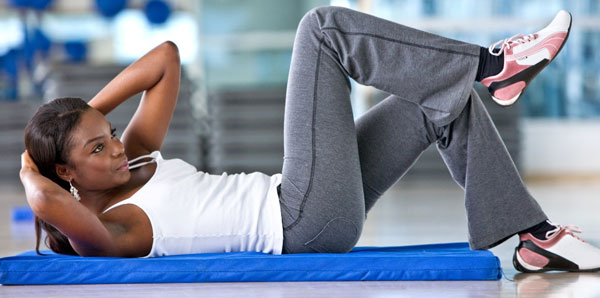There’s no magic answer other than to do what works best for you

Just a few minutes into an internet search on the topic of where to work out, you’ll find there is no shortage of opinions on the topic. There are benefits to working out at gym, and to developing a home-based workout routine. The key is to adopt a fitness routine that works for you—at home, at a gym or using a combination of both.
Gym
If you choose to work out at a gym, you’ll need to plan on:
- Selecting a gym that aligns with your fitness objectives (for example, a specialized gym like a yoga studio, or a full gym that offers a variety of equipment and classes)
- Paying monthly membership dues, and sometimes an enrollment fee
- Time to travel to and from workouts (finding a gym near home or work is usually a good idea)
Once you’ve prepared for the above, going to the gym has its advantages:
- Other people to help keep you motivated—group fitness classes, personal trainers, and friends are all at the gym, ready to help keep you accountable to your fitness routine and motivated throughout your workout.
- Variety of equipment—most gyms have a large selection of equipment and activities (pool, kettle bells, TRX suspension trainers, weight machines, elliptical trainers, etc.) so that you can easily mix up your routine and try new activities.
- Space dedicated to focusing on fitness—usually there are fewer distractions at the gym than there might be at home. It’s time and a space for you to get your workout in without phone calls, emails, or family members popping in. Even if you bring family members to the gym, many offer drop-off child care to keep your kids entertained while you sweat it out.
- Pampering perks—several gyms have extra perks like saunas, steam rooms, Jacuzzis, cafes or smoothie bars to treat yourself pre- or post-workout.
Home
Working out at home might be more your style if you want:
- Convenience—at home, the only travel time you have is to and from your workout room. You can work out whenever you want and there’s no waiting to use equipment.
- Privacy—if you’re self-conscious about trying your workouts at a gym, getting fit at home can help you feel more comfortable and confident with your exercises.
- Controlled costs—with a home gym you can decide exactly what you want to spend. Keep costs down with a few dumbbells, an exercise mat and maybe a DVD or two. Or, invest in the specialized equipment you care about most and know you’ll use over time. If you are going to create a home gym, start small and build up your equipment only after you know working out at home is something you’ll stick with over time.
If you’re going to give home workouts a try, be prepared to:
- Dedicate a space in your home that will provide the space and focus you need to do your workout
- Purchase the equipment you’ll need to meet your fitness objectives (yoga mats, treadmills, pull-up bars, etc.)
- Push yourself to get the results you want
No matter where you work out, WebMD suggests your fitness program includes five main components:
- Warm up—something to get your body ready for your workout. Could be an easy walk or slow pace on a bike.
- Cardio—an activity you enjoy that gets your heart rate up, like jogging, step aerobics, or jumping rope.
- Strength-building—resistance exercises to help build and tone your muscles. Try squats, pushups, bicep curls, or leg presses.
- Flexibility—increase flexibility with yoga and stretching.
- Cool down—similar to your warm up; bring your heart rate down.